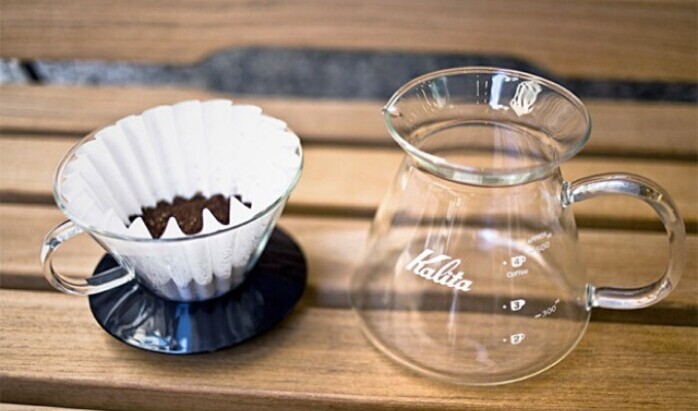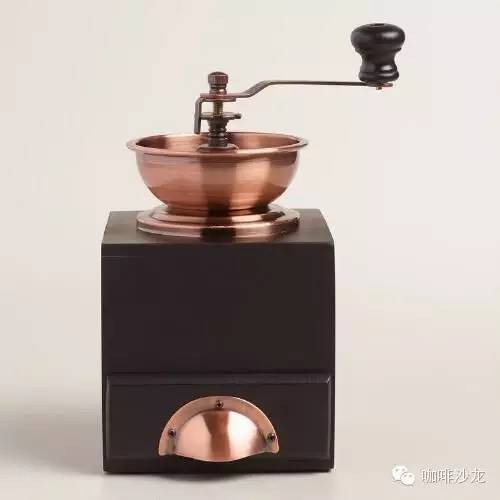General knowledge of roasting of coffee beans introduction of roasting methods by roasting machines
First, when the preheating temperature of the oven is not enough, the coffee beans are immediately put into the oven, which prolongs the baking time. Therefore, the baking loss is large, and the color of coffee beans is light, which is due to the lack of heat and the lack of full coking of the skin, resulting in a lack of color and rough internal tissue.
Second, the temperature of the oven is too high, the hard skin is formed prematurely on the surface of the coffee, which suppresses the expansion of the internal tissue, and because of its fast surface coloring, the operator mistakenly thinks that the product has been baked and ends the baking ahead of time. The inside of this kind of bean is sticky and dense, it doesn't expand as it should, and it doesn't have a normal flavor.
Third, the gap is too long after preheating. Too much heat accumulates in the internal furnace which has been dry and hot for too long. As soon as the coffee beans enter the oven, all the heat sources concentrate on the surface of the beans at the initial stage of the baking process, forming too strong heat, and then the heat disappears and cools rapidly. The unstable temperature in the furnace makes the coffee beans difficult to ripen inside.
Fourth, the baking time is too much or not enough. The baking temperature and time should be adjusted according to the number of beans. A small number of baking silos have more space, and the metal conducts more heat radiation, so the temperature is lower, while when the quantity is larger, the temperature can be higher. The baking time also needs to be adjusted flexibly. The heating of beans in the oven is nothing more than absorbing heat from the appearance and surrounding to the center of the beans, so the baking can be observed from the changes in the appearance of the beans.
In addition, the type and performance of the roaster will also cause the difference of baking time and temperature. The convection design of energy has been continuously improved from the direct-fired gas up-and-down fire mode to the electric heating mode which is now widely used. At the same time, the installation of fans can improve the stability of thermal convection, make the color of baked beans more uniform, and save electricity and baking time. 1. Drying
In the early stage of baking, the raw beans begin to absorb heat, and the water inside gradually evaporates. At this time, the color gradually changed from green to yellow or light brown, and the silver film began to fall off, you can smell a faint smell of grass. The main function of this stage is to remove moisture, which accounts for about half of the baking time, because water is a good heat transfer conductor and helps to bake the internal material of coffee beans. Therefore, although the aim is to remove water, the baker will make good use of the temperature of the water and properly control it so that it will not evaporate too quickly; in general, it is best to control the water to reach the boiling point and turn into steam in 10 minutes. At this time, the internal material is fully cooked, and the water begins to evaporate, rushing out of the outside of the coffee beans.
2. High temperature decomposition
Baked to about 160 degrees Celsius, the water inside the beans will evaporate into gas and begin to rush out of the outside of the coffee beans. At this time, the interior of the raw bean changed from endothermic to exothermic, resulting in the first burst sound. After the bursting sound, it turns to endothermic again, and the pressure inside the coffee bean is extremely high, up to 25 atmospheric pressure. Heat and pressure begin to deconstruct the original tissue to form new compounds that create the taste and taste of coffee; at about 190 degrees Celsius, the transition between endothermic and exothermic occurs again. Of course, high temperature cracking continues to occur, coffee beans from brown to dark brown, gradually entering the stage of re-baking.
3. Cooling
Coffee must be cooled immediately after roasting, quickly stop the pyrolysis at high temperature and lock the flavor. Otherwise, if the high temperature in the beans continues to work, the aromatic substances will be burned. There are two cooling methods: one is air-cooled and the other is water-cooled. The air-cooled type requires a lot of cold air to cool the coffee beans quickly within 3-5 minutes. In the field of professional baking, large roasters are equipped with a tray with a rotatable driving arm; when the baking is completed, the beans are automatically fed into the tray, and the fan at the bottom of the tray is immediately activated to blow cold air. And the pushing arm stirs the coffee beans to cool them. Although the speed of the water-cooled type is slow, it is clean and does not pollute, and it can better retain the aroma of the coffee, so it is used by the selected coffee industry. The water-cooled method is to spray a layer of water mist on the surface of the coffee beans, allowing the temperature to drop rapidly. As the amount of spraying water is very important, it requires precise calculation and control, and it will increase the weight of baked beans, which is generally used in large-scale commercial baking.

Important Notice :
前街咖啡 FrontStreet Coffee has moved to new addredd:
FrontStreet Coffee Address: 315,Donghua East Road,GuangZhou
Tel:020 38364473
- Prev

Type and characteristics of hand-brewed coffee filter cup selection of coffee utensils what brand of individual coffee is there in the hand brewer?
The speed of filtration changes because of the area of the hole on the filter cup, the smaller the area, the slower the filtration speed, this type of filter cup because the injected hot water will first stay in the filter cup, and then filter at a certain speed, extraction occurs in stagnant hot water, so the injection mode of hot water will not be affected, and can make relatively stable coffee. The larger the hole area, such as three-hole filter cup and one
- Next

The importance of bean grinder the extraction method of Italian coffee the Italian blending of coffee beans
Why is the bean grinder so important? making a cup of espresso is very strict. It can be said that the extraction method of espresso is the most complex way of coffee extraction, but it is also this complex process that makes the coffee more fragrant and delicious. This is something that mocha pots and other equipment will never be able to do. Espresso is brewed on every square inch of coffee powder
Related
- Beginners will see the "Coffee pull flower" guide!
- What is the difference between ice blog purified milk and ordinary milk coffee?
- Why is the Philippines the largest producer of crops in Liberia?
- For coffee extraction, should the fine powder be retained?
- How does extracted espresso fill pressed powder? How much strength does it take to press the powder?
- How to make jasmine cold extract coffee? Is the jasmine + latte good?
- Will this little toy really make the coffee taste better? How does Lily Drip affect coffee extraction?
- Will the action of slapping the filter cup also affect coffee extraction?
- What's the difference between powder-to-water ratio and powder-to-liquid ratio?
- What is the Ethiopian local species? What does it have to do with Heirloom native species?

